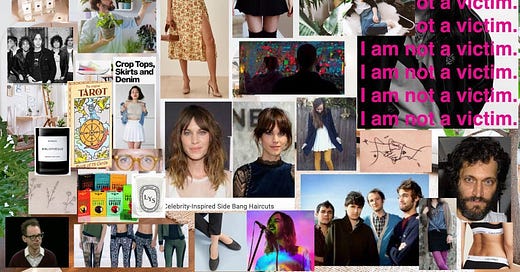In June last year, Sean Monahan, a trend forecaster - who will forever be referenced by everyone as part of the collective that introduced the world to normcore - published an observation on his 8Ball Substack. The piece, called ‘Vibe Shift’, proposed a fairly simple idea: sometimes in culture, things change. And now, we were on the cusp of something changing again.
And then, fast forward to a week ago, an article in The Cut, titled “A Vibe Shift is Coming: Will any of us survive it?”, injected Monahan’s prediction - from 7 months prior - with a fresh dose of fear. The vibe shift was indeed real, and you should be worried.
The idea of a vibe shift has been simmering below the surface since last summer. Back in June, I experienced a moment of collective euphoria at a daytime party in a club on the outskirts of Berlin. I filed a trends piece to a magazine, anchored in this anecdote, that forecasted an incoming hot vax summer, a summer of love. A new, hedonistic chapter driven by an acute awareness of our impending death. It made sense at the time, but turned out to be wrong. Instead, the summer was uncomfortably uncertain and anti-climactic. People in New York said the city’s energy was unsettling and weird. A few weeks later, the club on the outskirts of Berlin shut indefinitely after staff members were accused of mistreating a guest.
And still, now, that sensation of being on the verge of a vibe change vibrates through the air. We can sense that the collective ‘we’ is slowly but surely gravitating towards someplace, and something, else. But no one seems to be able to locate where that new centre of gravity is.
Why is it so hard to figure out where the vibe is shifting to?
Many have observed that those that are talking about the vibe shift are mostly geriatric millennials - a demographic who were once the tastemakers; shaping, adapting and surviving previous vibe shifts with admirable ease. Zoomers whose relevance had now started to slip.
In the post-recession vibe migration, they shapeshifted effortlessly into the Williamsburg hipster, navigating weekday hangovers after Monday night indie sleaze parties at Trash and Cinespace. And around 2010, they sailed with ease through the pink and teal-tinged, post-internet realm of vaporwave. Eventually, they replaced seapunk aesthetics with the designer streetwear of the circa 2016 hypebeast vibe shift.
But now, they were no longer at the white-hot centre of the cultural zeitgeist. Many 30-somethings argue the vibe is returning to early aughts indie sleaze again. But that’s just a byproduct of a millennial yearning to return to the permissive promiscuity of the aughties.
Maybe it’s harder for them to navigate the next vibe shift because it’s no longer as straightforward to pinpoint. Before, a visit to a downtown dive bar, house party, or high street of any metropolitan city, or a flick through the pages of an edgy lifestyle or fashion magazine would offer a clear indication of the “vibe”.
Now, what’s cool and what isn’t is increasingly shaped by smaller, niche communities in the intimate confines of the web, away from the public eye: Discord servers, Substack newsletters, Telegram groups, obscure subreddits, Twitch live streams and rapidly moving TikTok trends. A fragmented reality that seems to deeply unsettle those not familiar with this dark forest.
On the latest episode of the cultural commentary podcast Red Scare, one of the hosts called the current angst around the vibe shift nothing more than an “elder millennial death moan”. A certain subset of ageing people are doomed to forever chase what’s next. But history will be kinder to those that instead embrace their cultural legacy.








